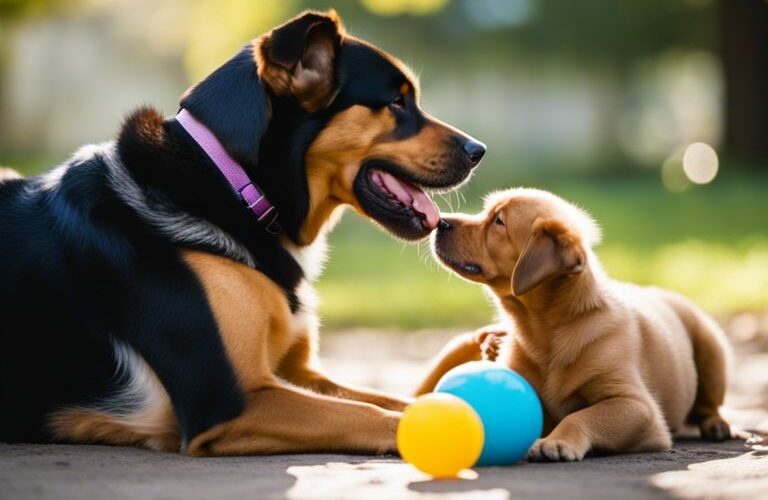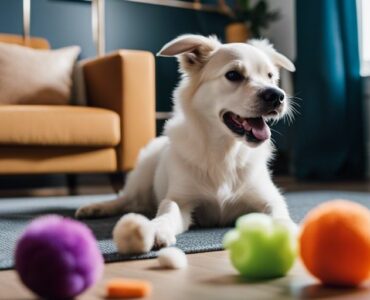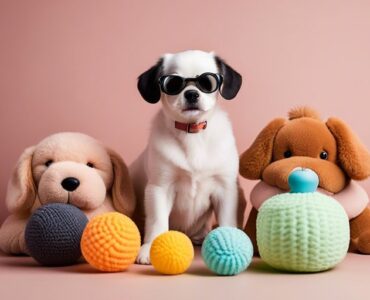Discerning the appropriateness of a toy for your canine companion can be a daunting task, especially when considering the specific needs of their breed. While there are countless products on the market, not all are suited for every dog’s breed. Understanding the characteristics and tendencies of your dog’s breed is crucial in selecting the right toys for them to enjoy. Failure to do so could result in injury, frustration, or boredom. In this blog post, we will explore key factors to consider when choosing toys for your furry friend and provide insights into selecting the most appropriate toys for specific dog breeds.
Table of Contents
Key Takeaways:
- Consider your dog’s size and strength: Choose a toy that can withstand the power of your dog’s bite and the tug-of-war strength of their play style
- Match the toy to your dog’s instinctual behaviors: Research your dog’s breed and their typical play and hunting behaviors to find a toy that appeals to their natural instincts
- Avoid toys with small parts: Ensure that the toy is safe for your dog’s breed by avoiding toys with small parts that could be a choking hazard or cause injury
- Choose toys for mental stimulation: Consider toys that provide mental enrichment, such as puzzle toys or treat dispensers, that cater to your dog’s breed-specific intelligence and problem-solving abilities
- Seek out breed-specific toys: Look for toys designed specifically for your dog’s breed, as they may feature characteristics or attributes that appeal to your dog’s breed-specific preferences
Understanding Dog Breeds and Their Characteristics
Any responsible dog owner knows that understanding their dog’s breed and its characteristics is crucial for providing the best care and suitable toys. Each breed is unique in terms of size, energy levels, and play styles, which should all be considered when selecting toys for your furry friend.
The Role of Size and Build in Toy Selection
On the topic of size and build, it’s important to consider a toy that is appropriate for your dog’s breed. Small breeds may benefit from toys that are smaller in size and lightweight to accommodate their smaller jaws and delicate frame, while larger breeds may require toys that are sturdy and durable to withstand their powerful jaws and strength.
Energy Levels and Play Styles
Play is an essential part of a dog’s life, and understanding their energy levels and play styles is crucial in selecting the right toys. High-energy breeds may benefit from toys that allow for active play and physical exercise, such as chew toys and fetch toys, while low-energy breeds may prefer interactive toys that stimulate their mind without requiring too much physical exertion.
With a better understanding of your dog’s breed characteristics, you can select toys that cater to their specific needs, promoting mental stimulation and physical activity while ensuring their safety and enjoyment.
Types of Toys Suitable for Different Dog Breeds
Some dog breeds have specific needs when it comes to toys. Understanding what types of toys are suitable for different breeds can help ensure that your dog stays safe and satisfied during playtime. Here are some guidelines for selecting the right toys for your furry friend:
| Chew Toys and Teething Breeds | Interactive Toys for Intelligent and Energetic Breeds |
| Plush Toys for Affectionate and Gentle Breeds | Fetch Toys for Athletic and Outdoor-Loving Breeds |
Chew Toys and Teething Breeds
One important consideration for chew toys is the strength of the toy and the breed of your dog. Breeds with strong jaws and a high propensity for chewing, such as puppies and working breeds, may require more durable toys to withstand their chewing habits. It’s important to choose chew toys specifically designed for teething breeds in order to soothe their gums and provide relief during the teething process.
Interactive Toys for Intelligent and Energetic Breeds
Toys that provide mental stimulation and physical activity are essential for intelligent and energetic breeds. These breeds require toys that challenge their problem-solving abilities and keep them engaged for extended periods of time. Look for toys that can be filled with treats or kibble, as they provide both mental and physical stimulation. Additionally, consider toys that incorporate sound or movement to keep intelligent and energetic breeds entertained.
Suitable interactive toys for intelligent and energetic breeds include puzzle feeders, treat-dispensing toys, and interactive balls. These toys can help satisfy the high energy levels and intellectual needs of breeds such as Border Collies, Australian Shepherds, and Poodles.
Plush Toys for Affectionate and Gentle Breeds
Plush toys are ideal for affectionate and gentle breeds that enjoy cuddling and carrying around their toys. These breeds are often drawn to soft textures and will benefit from having plush toys to snuggle with when they are feeling anxious or lonely. Plush toys can also provide comfort and a sense of security for affectionate and gentle breeds when their owners are away.
For instance, breeds such as Golden Retrievers, Cavalier King Charles Spaniels, and Bichon Frises are known to enjoy plush toys due to their gentle nature and affectionate tendencies.
Fetch Toys for Athletic and Outdoor-Loving Breeds
Toys designed for fetching are perfect for athletic and outdoor-loving breeds, as they provide an outlet for their high energy levels and love for outdoor activities. These breeds thrive on physical exercise and enjoy running and playing outdoors, making fetch toys an ideal choice. Look for toys that are durable and easy to throw and retrieve, as they will withstand the wear and tear of frequent use.
Outdoor-loving breeds such as Labradors, Boxers, and German Shorthaired Pointers will benefit from having a variety of fetch toys to keep them active and entertained during outdoor playtime.
Safety Considerations and Durability of Dog Toys
For the safety of your canine companions, it is crucial to consider the durability and safety of the toys you provide for them. Dogs can be rough on their toys, and it is important to ensure they are made of safe, durable materials that can withstand your dog’s breed’s specific play style.
Materials and Manufacturing: What to Look For
On the lookout for dog toys, it is important to consider the materials and manufacturing processes used in their creation. Look for toys that are made from non-toxic, sturdy materials, such as rubber, nylon, or hard plastics, to ensure they can withstand the wear and tear of your dog’s play. Additionally, seek out toys that are made with pet-safe dyes and colors to prevent any potential harm to your pet.
Recognizing Signs of Wear and Tear
Considerations such as fraying, small pieces coming loose, or sharp edges on the toys can indicate that it is time to replace them to avoid potential ingestion or injury. Regularly inspect your dog’s toys for any signs of wear and tear, and dispose of any damaged toys promptly to ensure the safety of your furry friends.
Materials used in the construction of dog toys, such as rubber, nylon, and hard plastics, are typically more durable and less likely to break apart when chewed on. By regularly inspecting your dog’s toys, you can ensure they are always playing with safe, sturdy toys designed to withstand their breed’s specific play style.
The Trial and Error Process in Finding the Perfect Toy
Now that you have a better understanding of your dog’s breed and their specific toy preferences, it’s time to embark on the trial and error process of finding the perfect toy. This process involves introducing new toys to your dog, observing and adapting to their preferences, and making adjustments as needed. It may take some time and patience, but finding the right toy for your dog’s breed is essential for their physical and mental well-being.
When introducing new toys to your dogs, it’s important to monitor their reactions and behavior. Some dogs may immediately take to a new toy, while others may need some time to warm up to it. Be patient and allow your dogs to explore and interact with the toy at their own pace. Keep an eye out for any signs of discomfort or disinterest, as this will help you determine whether the toy is a good fit for them.
Observing and Adapting to Your Dog’s Preferences
Process of observing and adapting to your dog’s preferences is essential in finding the perfect toy for them. Observe their behavior and reactions to different types of toys, and adapt by providing more of what they enjoy. If your dogs show a preference for a certain texture, size, or type of toy, consider purchasing similar products to cater to their preferences. Adapting to your dog’s preferences is an ongoing process, and it may require some trial and error before finding the perfect toy for them.
Adapting to your dog’s preferences is crucial in ensuring that they receive the right type of physical and mental stimulation from their toys. By observing and adapting to their preferences, you can create a safe and enriching environment that promotes their overall well-being.
Conclusion
Hence, it is crucial to consider your dog’s breed when choosing the right toy. By understanding your dog’s natural instincts, tendencies, and physical attributes, you can select a toy that aligns with their specific needs and preferences. Whether it’s a puzzle toy for a highly intelligent breed or a sturdy chew toy for a strong-jawed breed, taking into account your dog’s breed will ensure that the toy you choose is not only safe and fun but also enriching and beneficial for their overall well-being.
FAQ
Q: How do you know if a toy is right for your dog’s breed?
A: It is important to consider your dog’s breed when selecting toys. Different breeds have different play styles and chewing strengths. Research your dog’s breed traits and tendencies to determine what type of toys are suitable. For example, terriers may enjoy toys that encourage digging and hunting, while herding breeds may prefer toys that involve chasing and retrieving. Additionally, consider the size and physical characteristics of your dog’s breed when choosing a toy to ensure it is safe and appropriate for your pet.
Q: What should I consider when selecting toys for my dog’s breed?
A: When choosing toys for your dog’s breed, consider their size, activity level, and chewing habits. Small breeds may prefer smaller toys that are easy to carry and play with, while larger breeds may require more durable toys that can withstand their powerful jaws. High-energy breeds may benefit from toys that encourage physical activity, such as fetch toys or interactive puzzles. Similarly, consider your dog’s chewing habits – if your dog is a strong chewer, look for toys made from tough materials like rubber or nylon.
Q: Are there any toys that are generally suitable for all dog breeds?
A: While different breeds may have specific preferences, there are certain types of toys that can be enjoyed by dogs of all breeds. For example, interactive toys that dispense treats or require problem-solving skills are popular with many breeds. Additionally, toys that can be used for interactive play between you and your dog, such as tug-of-war ropes or balls for playing fetch, are generally well-received by most dogs. When in doubt, choose toys that are designed to be safe and engaging for a wide range of breeds, and always supervise your dog during playtime to ensure their safety.










Add comment